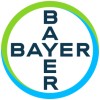
A Multicenter Trial Comparing Multi-course Chemotherapy in Locoregionally Advanced Nasopharyngeal...
Nasopharyngeal CarcinomaLocoregionally advanced nasopharyngeal carcinoma (NPC)(stage III, IV in UICC 2002 Classification) can be divided into two groups according to the risk of metastasis: high-risk metastasis group (T4 or N2-3) and low-risk metastasis group (T3N0-1). In low-risk metastasis group, concurrent chemoradiotherapy (CCRT) might decrease local recurrence and distance metastasis, which benefits overall survival. On the other hand, neoadjuvant chemotherapy is also associated with lower distance metastasis of advanced stage NPC. Nevertheless, CCRT alone or neoadjuvant chemotherapy alone leads to unsatisfactory results regarding to distance metastasis in patients with high-risk metastasis group. In this case, it is utmost important to investigate the new treatment combining neoadjuvant chemotherapy plus CCRT in order to improve overall survival of locoregionally advanced NPC with high-risk metastasis. In our study, in order to investigate the effect and adverse reaction of neoadjuvant chemotherapy plus CCRT on distance metastasis and locoregionally relapse, four hundred patients with high risk of distance metastasis will be randomly divided into two groups, comparing neoadjuvant chemotherapy (DDP+5FU) plus CCRT (DDP) and CCRT (DDP) alone. We aim to find out the best therapeutic regimen with lowest adverse reaction for NPCS with high risk of distance metastasis.

Peginterferon Plus Ribavirin for Hepatitis C Patients Concomitant With Hepatocellular Carcinoma...
Chronic Hepatitis CHepatocellular CarcinomaCombination therapy with pegylated interferon-alpha plus ribavirin has greatly improved the treatment efficacy and is the mainstream of treatment for chronic hepatitis C infection. The efficacy and safety of pegylated interferon-alpha plus ribavirin combination therapy and its impact on the outcome in chronic hepatitis C patients concomitant with hepatocellular carcinoma deserve to be elucidated. The purposes of this study are: To evaluate the efficacy and safety of pegylated interferon-alpha 2a plus ribavirin combination therapy in chronic hepatitis C patients concomitant with hepatocellular carcinoma. To investigate the role of baseline and on-treatment factors on the response to pegylated interferon-alpha 2a plus ribavirin combination therapy in chronic hepatitis C patients concomitant with hepatocellular carcinoma.

Advanced Renal Cell Carcinoma, With Failure or Unsuitable on Prior Interferon-alpha or Interleukin-2...
CarcinomaRenal CellThe primary objective of this prospective, observational, post-marketing study is to evaluate the patient characteristics, pre-treatment and treatment duration in Renal Cell Carcinoma (RCC) patients who are candidates for systematic therapy and in whom a decision to treat with Nexavar® has been made under real-life practice settings and approved reimbursement restriction in Taiwan. Therefore, the main objective of the study is to collect data on: Prescription pattern: to determine the factors affecting compliance and duration of treatment with special attention given to education status, demography, disease details, pre-treatment, concomitant medication and other baseline data Nexavar® treatment and efficacy data Adverse events using Common Terminology Criteria for Adverse Events (CTCAE) version 4.0

Evaluating the Safety and Efficacy of SB Injection in Patients With Advanced or Primary Hepatocellular...
Hepatocellular CarcinomaThe purpose of this study is to determine efficacy of SB injection in Hepatocellular Carcinoma (HCC).

Adenoid Cystic Carcinoma, Erbitux, and Particle Therapy
Adenoid Cystic CarcinomaThe ACCEPT (A(denoid) c(ystic) c(arcinoma), E(rbitux, and) p(article) t(herapy))-trial is a prospective, monocentric phase I/II feasibility trial evaluating toxicity and efficacy in the combined treatment of intensity-modulated radiation therapy (IMRT) and carbon ion (C12) boost with the epidermal growth factor receptor (EGFR) antibody cetuximab. The primary objective of the study is to explore the toxicity of the combined modality regimen consisting of heavy ion therapy / IMRT and EGFR antibody immunotherapy, by assessing the rate of patients with mucositis or any other toxicity of severity grade 3 or 4 according to NCI CTCAE V. 4. Secondary endpoints include local control, distant control, overall disease-free survival, overall survival

Consolidation Whole Abdominal Intensity-Modulated Radiation Therapy (IMRT) in Advanced Ovarian Cancer...
Ovarian CancerTubal Carcinoma1 moreThe primary objective of this phase-II study is to assess the toxicity of consolidation intensity-modulated whole-abdominal radiotherapy using tomotherapy in patients with advanced optimally debulked stage International Federation of Gynecology and Obstetrics (FIGO) III ovarian cancer with a complete remission after adjuvant chemotherapy. 36 patients will be treated to a total dose of 30 Gy in 1.5 Gy fractions. The planning target-volume includes the entire peritoneal cavity and the pelvic and para-aortal node regions. Intensity-modulated whole-abdominal radiotherapy allows an effective sparing of liver, kidneys and bone-marrow (vertebral bodies and pelvic bones).

A Phase II Study of Tegafur/Uracil (UFUR®)Plus Thalidomide for the Treatment of Advanced or Metastatic...
CarcinomaHepatocellularPrimary objective: To evaluate the overall response rate of tegafur/uracil (UFUR®) and thalidomide in the treatment of advanced or metastatic hepatocellular carcinoma. Secondary objectives: To determine the disease stabilization rate; To assess the progression-free survival and overall survival; To establish the safety profile; To evaluate the changes of circulating factors indicating the angiogenesis activity and their correlation with objective tumor response.

Randomized Phase I/II of RAD001 in Advanced Hepatocellular Carcinoma (HCC)
Hepatocellular CarcinomaThe mTOR has been examined in hepatocellular carcinomas as well. This pathway is up-regulated in a proportion of hepatocellular carcinoma (HCC) and that rapamycin inhibits cell proliferation and blocks S6K phosphorylation. Inhibition of mTOR had been shown to suppress substantially the liver tumor growth. Nevertheless, inhibition of mTOR was demonstrated to have a clinical response in some cancer types. These reports imply that inhibition of mTOR could be a promising therapeutic strategy in the treatment of HCC. Therefore, we hypothesize that RAD001, a rapamycin analog, can inhibit the mTOR, and subsequently suppress the liver tumor in the treatment of HCC patients. This study is aimed to investigate the safety, efficacy, pharmacokinetics, pharmacogenetics and feasibility of RAD001 in advanced HCC patients. This study will be a randomized phase I study with dose escalation and subsequently a phase II study of intent to treat, as well as pharmacokinetic, pharmacogenetic and surrogate marker study of RAD001.

A Dose Escalation Trial of Radiation Therapy (RT) for Hepatocellular Carcinoma (HCC)
Hepatocellular CarcinomaHepatocellular carcinoma (HCC) is one of the leading malignancies in Taiwan. Surgery and local ablative therapy remain the treatment of choice for curative purpose. Transarterial chemoembolization has been the mainstay of intrahepatic control for patients not being candidates for local modalities of treatment. Sorafenib is recently integrated into the treatment options, mainly for intrahepatic or extrahepatic wide spread disease contraindicated for the other modalities. External radiotherapy (RT) has been selectively used for patients with the localized hepatic tumor(s) refractory to the above treatment options. The data from the retrospective studies were biased by the patient selection and uncontrolled comparison with patients not receiving RT. The obstacles for RT to HCC remain unanswered with heterogeneity in dose of radiation and lower tolerance of liver to RT in viral hepatitis carriers. Such a sublethal dose might be associated with unsatisfactory tumor control, intra-/extra-hepatic metastasis, and radiation-induced liver disease in a significant proportion of HCC patients. The purposes of this phase I study are primarily to determine the maximally tolerated dose of RT, and secondarily to evaluate the tumor control, to assess patterns of failure and survival, to analyze the characteristics of radiation-induced liver disease, as well as to collect blood samples for translational research. HCC patients who are hepatitis B virus carriers and graded as Child-Pugh A cirrhosis are enrolled. This dose escalation trial is conducted with the 7-Gy increase in 2 fractions (3.5 Gy per fraction) for a total of four levels, from 42 Gy up to 63 Gy. Conformal RT with three-dimensional design, intensity modulated RT, or volumetric modulated arc therapy is used with the defined dose-volume threshold for normal liver and the other structures. Five patients are treated for each dose level, with dose limiting toxicity in less than 2 patients judged to be acceptable. A minimum of 15 patients are required for the starting dose level of 49 Gy if the treated tumor diameter is less than 10 cm. Imaging modalities are used for estimating treatment response and detecting metastasis. Serum analyses are done for evaluating hepatic function, viral load, hematological toxicity, and translational research for angiogenic and inflammatory studies.

A Phase I Study of Lapatinib (Tykerb) Plus Ixabepilone (Ixempra) as 2nd-line Treatment for Patients...
Recurrent Endometrial CancerEndometrial cancer (EC) is the 8th most common female cancer in Taiwan. Its incidence is increasing in the recent few years, around 1,200 new cases per year. The outcome of recurrent EC is disappointing, except focal recurrences that could be irradiated or removed. Chemotherapy is currently the most common salvage treatment for recurrent endometrial cancer. However, the response rate (RR) to 2nd-line treatment is approximately 0-27.3%, with short median time to progression, 2-3.9 months and low overall survival, 6.4-11 months. Due to progress of studies on the molecular and genetic basis of cancer and cellular signaling pathways, targeted therapy has been developed for various cancer treatments. A Gynecologic Oncology Group study found 44% of advanced endometrial cancer had HER>=2+ and the ratio of HER2:chromosome 17 (CEP17) >=2. Another study showed that HER>=2+ was seen in 47% of carcinosarcoma. These evidences indicated HER2 gene amplification and HER2 overexpression occur in endometrial cancer and carcinosarcoma, especially in those of high grade and recurrence. Lapatinib (L), an oral inhibitor of both EGFR(epidermal growth factor receptor) and HER2(human epidermal growth receptor), has been shown to be an effective treatment in HER2/neu overexpressing metastatic breast cancer. Ixabepilone is a semisynthetic analog of the natural product epothilone B, and recently has been approved by US Food and Drug Administration as a treatment option in metastatic breast cancer. It was also observed that lapatinib + ixabepilone killed more breast tumor cells than trastuzumab + paclitaxel in vitro. Two GOG(Gynecologic Oncology Group) studies had reported that weekly Ixabepilone as 2nd-line chemotherapy provided a similar RR to 3-weekly regimen of 14.3% in platinum- and taxane-resistant epithelial ovarian cancer with less severe toxicities. The combination of lapatinib and ixabepilone is expected to become an effective treatment for recurrent endometrial cancer and carcinosarcoma, but the ideal dose is yet to be surveyed.
